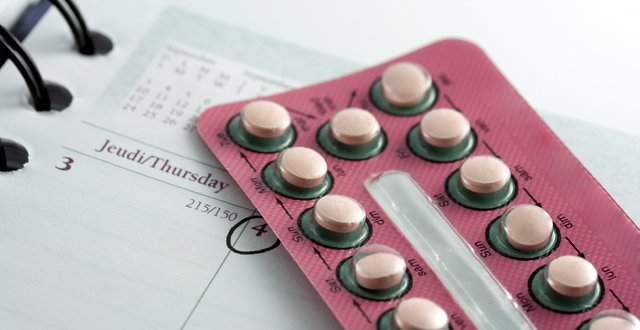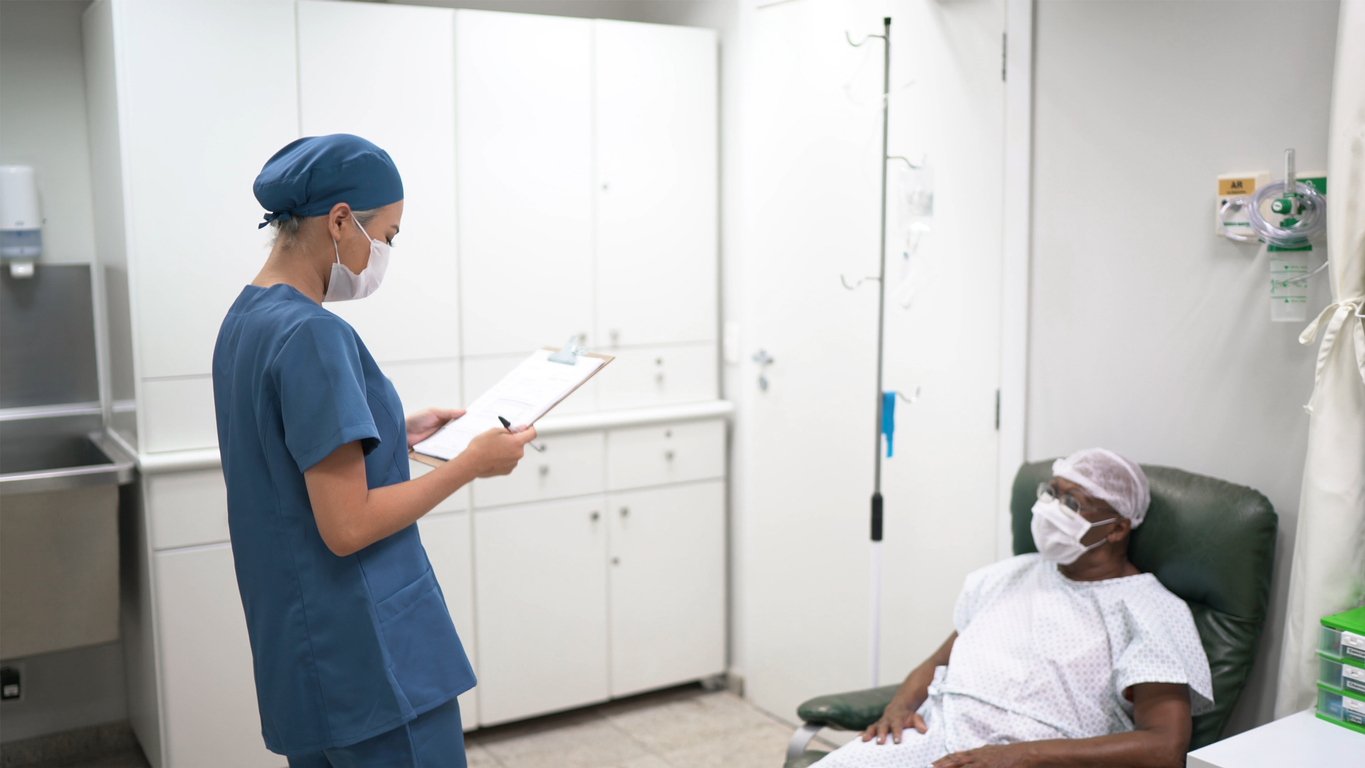Irish women are fortunate to have quite a large range of options when it comes to contraception. That’s the good news. The bad news is that contraception can be quite costly for those without a medical card. Another bit of bad news is that some of the more commonly-used contraceptives are much less reliable than others and a lot less reliable than people perceive them to be. This is a huge issue in situations where an unexpected pregnancy would be disastrous.
One of the most common contraceptives prescribed and used in Ireland is ‘the pill’ (better referred to as combined hormonal contraception (CHC)). CHC, which include the many different brands of pill, the CHC patch and ring, are excellent contraceptives when used exactly as instructed and less that 0.5 pregnancies should happen for every 100 users each year.
Unfortunately, the real failure rate for CHC is closer to nine pregnancies for every 100 users each year. That is a shocking statistic — the pill can be up to 20 times more likely to fail than we would expect. Failures usually happen as a result of missed pills, particularly when those errors are made around the time of the seven-day break.
Pill errors are extremely common. A survey of German women found that over 50 per cent of pill users had forgotten one or more pills in the preceding three packets, and at a GP meeting in Dublin recently the famous contraception expert Prof John Guillebaud (Emeritus Professor of Family Planning and Reproductive Health at University College London) suggested that we start advising women against the seven-day break in an effort to reduce CHC failures. This is actually a great idea and some proprietary pills are already offering shortened breaks. An even better way to prevent unintended pregnancies though is to avoid CHC contraception altogether and consider one of the long-acting reversible contraception (LARC) options.
<h3><strong>LARC </strong></h3>
LARC includes injectable hormones, sub-dermal implants and all the many hormone- and metal-bearing intrauterine contraceptive devices (IUCDs). As a group, their failure rate is much lower than other methods and many of them offer non-contraceptive benefits to the user.
In Ireland, we have quite a few LARC options. We only have access to one variety of depot progestogen given by IM injection (Depo-Provera), one sub-dermal progestogen implant (Implanon NXT), three progestogen intrauterine devices (IUDs) (Mirena, Kyleena and Jaydess) and we can access a wide variety of copper IUDs through the pharmacists, or GPs can buy them directly from UK suppliers.
<h3><strong>DMPA </strong></h3>
Depot medroxyprogesterone acetate (DMPA) is available in a pre-filled syringe containing a 1ml solution that has 150mg of DMPA in it. It is given as a deep IM injection (gluteal or deltoid). It lasts for more than 12 weeks (the license is for 14 weeks in the UK) and is one of the most effective forms of contraception, with a failure rate of well under 1 per cent.
The MPA hormone enters the systemic circulation and causes complete anovulation via a shut-down of the hypothalamic-pituitary-ovarian feedback system. No other form of contraception delivers as much hormone to the blood — that’s why it is so reliable — but minor side-effects (bloating, acne, irritability, weight gain, etc) can be a problem for some women as a result.
Most women notice disruption to their normal monthly bleed either as extra, unscheduled bleeding (typically in the first three-to-six months), followed by amenorrhoea in the longer term. This amenorrhoea may linger for up to a year after the injections are discontinued, so women planning a baby need to come off DMPA about a year in advance of starting to try to conceive.
Major side-effects are very rare, thankfully, so virtually any woman can try it. Smokers aged over 35 years, obese women over 35 years, women who suffer migraine with aura, recent postpartum mothers, etc, — none of these women should be offered CHC because of venous thromboembolism (VTE) risk but all can safely be offered DMPA, as it does not impact VTE risk.
It can be used by women on liver enzyme-inducing medications without any loss of contraceptive protection. In fact, any woman in almost any situation can use it but special attention should be paid to women under 18 and over 45 years of age. We know that DMPA has a strong effect on the ovary. That effect can be so strong that it may cause a transient drop in bone mineral density (BMD).
When ovarian function is profoundly reduced, less oestrogen is released into the circulation and in some women, this results in a slight drop in BMD. This drop does not result in a higher fracture rate, nor does it require DEXA or bone turnover marker surveillance but if a woman already has multiple osteoporotic risk factors, then maybe DMPA is not the best option for her — particularly if other choices are suitable. Women under 18 years of age are still creating new bone and women over 45 years of age are already losing it, so we consider other options for them, unless DMPA is all that suits. The UK Faculty of Sexual and Reproductive Healthcare (FSRH) do not limit the total amount of time women may use DMPA but they do suggest we update their medical history for osteoporosis risk and explore alternative contraceptive options at two-year intervals. DMPA was also mentioned in a recent observational Danish study on the associations of hormonal contraception with depression (Dr Øjvind Lidegaard et al, published in <em>JAMA Psychiatry</em>).
The study noted that women in Denmark who used DMPA were 2.7 times more likely to seek GP advice about low mood. That does not establish that DMPA use causes low mood; only that it was somehow linked. Something to be mindful of when discussing options. In the UK, a new, lower-dose subcutaneous form of DMPA is available under the name ‘Sayana Press’ and seems to be well tolerated by users.
<h3><strong>Implanon NXT </strong></h3>
The three-year sub-dermal implant (Implanon NXT) is statistically the safest form of contraceptive in the world — with better reliability than being sterilised.
Once placed under the skin, it allows a supply of etonogestrel to continuously enter the body. The artificial progestogen, while having a minimal effect on FSH levels and other ovarian function, still manages to suppress ovulation by means of blocking the LH surge (unlike DMPA, which affects all ovarian functions). This profound anovulation can be reversed within a few days of removing the device, so return to background fertility is almost immediate. The absence of any oestrogen means that women who are prevented from using CHC pills, patch or ring may use Implanon NXT safely.
There are some potential disadvantages with Implanon though. Its removal can cause some scarring and medico-legal cases have been taken against GPs for cosmetically unacceptable scars. The low level of progestin delivery may result in erratic and unpredictable bleeding patterns. This is most likely to occur in the first three to six months after insertion and can be controlled in most cases with the use of additional hormone such as the CHCP, POP or DMPA. Bleeding might also respond to NSAIDs or tranexamic acid if more acceptable to the patient. Once the bleeding pattern settles, many women experience amenorrhoea or light, acceptable periods. The unlucky women who continue to bleed erratically should be screened for disease (chlamydia, gonorrhoea, cervical pathology) and then offered either ongoing bleed-controlling medications or ultimately removal. Implanon NXT is not recommended as a contraceptive method for women taking liver enzyme-inducing drugs, so those on certain anti-epilepsy and TB drugs, most HIV antiretrovirals and St John’s wort, to name a few, should not be offered it.
Another recent issue with Implanon NXT is placement training. The procedure for inserting an Implanon NXT is very easy, but serious mishaps have occurred. There are several documented cases of devices entering the vascular system when placed too near the biceps groove. Removing the device can be tricky, particularly if inserted too deeply into the fascia or biceps muscle. For these reasons, the manufacturers and the medical defence companies advise that doctors should not offer insertion or removal without prior training.
Easier said than done, though. It can be difficult to secure training within your own busy surgery. The ICGP can arrange practice visits where a colleague like myself will come to you and participate in live insertions/removals, but the GP needs to book multiple procedures in a single surgery, which can be a challenge. There is a cost involved too, which is a hurdle. Another recent concern is mention of GMS payment being dependent on proof of insertion competence.
<h3><strong>Hormone IUDs </strong></h3>
Instead of delivering contraceptive hormone into the circulation where it can impact the whole body, why not localise it to the uterus? That is the premise of the three IUDs currently available in Ireland — Mirena, Kyleena and Jaydess. These hormone-bearing devices are placed at the uterine fundus, where they release varying amounts of an artificial progestogen — levonorgestrel (LNG). They last from three-to-five years, depending on the device, and although expensive for private patients initially, they will be equivalent in cost to the pill within 12-to-18 months. They are available in pharmacies under the GMS and a small GMS fee is offered to the GP for performing insertion/removal.
All three IUDs are available on the GMS and the Drugs Payment Scheme. Even with private insertion charges, they will be cost-equivalent to CHC within 12-to-18 months. None are affected by liver enzyme inducers and they are less likely to cause systemic side-effects than oral or intramuscular hormones.
<h3><strong>Mirena </strong></h3>
Mirena is an IUD with a 52mg reservoir of LNG on it. It releases approximately 20mcg of the LNG every day over the course of its five-year life span (slipping down to 12mcg and 10mcg in the fourth and fifth years, respectively). LNG alters the cervical mucus, making it spermo-toxic, as well as depleting the endometrial lining — further reducing fertility. Some of the LNG will escape into the circulation and in some women, this will result in them becoming anovulant, but this varies from user to user.
Placement is technically tricky and requires training. Poor placement technique may increase the likelihood of mishaps, such as failure and pregnancy (in which case ectopic risk is higher), perforation of the uterus and migration of the device into the pelvis (and beyond). Expulsion and contraceptive failure are also more likely with inexperience or poor technique.
Insertion reactions, such as vaso-vagal phenomenon and persistent pain after insertion, make it difficult to offer IUD placement during a typical busy surgery and designated clinics are recommended. There is no reason why IUDs may not be offered to younger, nulliparous women, or to women who have had several Caesarean sections, but technique improves with experience and the FSRH advises that GPs who will be fitting less than one IUD per month will de-skill quickly and should consider referring patients to colleagues.
Removal is a much simpler affair and does not require formal training.
Although there is data to suggest the contraceptive action of Mirena continues beyond five years, it must be changed after five years if a woman wants to continue to use it as a contraceptive. The exception to this is with women whose device was inserted after they were 45 years old. In these cases, a woman with a five-year-old Mirena device in situ may opt to keep that current device, as her advanced age makes a pregnancy unlikely. After 55 years of age, all IUDs should be removed.
The endometrial depletion that results from local LNG can be so profound that Mirena has an additional indication for the control of regular, non-sinister heavy menstrual bleeding (HMB). If a woman with HMB has improved while wearing her Mirena and if she is not relying on it for contraception, then she may continue with that current device well past the five-year life span.
If her bleeds get heavy again or if she chooses to use a Mirena for contraception too, then she will need a new device. HMB will most likely not respond to a Mirena overnight and additional medications, ie, CHC, tranexamic acid, NSAIDs, etc, should be offered before or at placement until the menorrhagia subsides.
Mirena has a third application as endometrial protection from the effects of hormone replacement therapy (HRT) oestrogen. HRT oestrogen may not be offered on its own to a woman with a womb, as the oestrogen can cause abnormal cellular changes within the endometrium. Progestogen can prevent these changes.
If a woman with a Mirena needs HRT and the device is less than five years in situ, then she need only take oestrogen for symptom relief. If the device is in situ for more than five years (as it would be if she had had it inserted after she was 45 years of age or if she was using it only for HMB), then she will either need to use oral/ transdermal progestins with her HRT oestrogen or have the Mirena changed.
<h3><strong>Kyleena </strong></h3>
The newer IUD to Ireland, Kyleena, is very similar to Mirena and Jaydess, in that it is a T-shaped IUD that has a LNG hormone reservoir on its vertical shaft. Kyleena has a smaller frame, like the three-year Jaydess device, but with the 19.5mg LNG payload it has been granted a license for effective contraception for five years.
Just like its sister IUDs, Kyleena acts primarily to block fertilisation in creating a progestin-rich hormonal environment, which is highly disruptive to sperm motility in the cervical canal, uterus and tubes. There is also a back-up protection afforded by the anti-implantatory effects caused by the foreign body response in the endometrium to the device.
Because Kyleena is small and uses the wonderful ‘evo inserter’, it makes insertion as easy as it is for Jaydess. Sadly, it is unlikely to be powerful enough to significantly improve menorrhagia in afflicted women, as it only delivers about a 10mcg daily dose of LNG and it cannot be used as an alternative to systemic progestogen when prescribing HRT (only Mirena is licensed for those purposes). Still, when highly reliable LARC is desired, Kyleena adds another great choice to consider and its smaller frame may be more tolerable for young women or nulliparous women.
<h3><strong>Jaydess </strong></h3>
Jaydess only has a three-year reservoir of 13.5mg of LNG hormone and uses the same small-type frame as Kyleena. It is therefore easier and more comfortable to insert than Mirena and this may be useful for nulliparous women or those with LLETZ (Large Loop Excision of the Transformation Zone) scarring. As it allows less LNG to escape from the rate-limiting membrane (6mcg per day in year one, as opposed to Mirena’s 20mcg or Kyleena’s 10mcg), it is only licensed for contraception. It will not likely improve HMB and it may not be offered as an alternative to HRT progestin.
<h3><strong>Copper IUCDs </strong></h3>
Before we ever had Mirena, we had copper coils. Copper-bearing IUCDs have been used for generations with great effect. Copper is both spermo- and ovo-toxic and also causes a profound change in the cellular make-up of the endometrium. Without exposing the wearer to any form of hormone, it gives excellent contraception and will last for five, 10 or 12 years (or more, depending on the variety). If fitted after a woman’s 40th birthday, the FSRH suggests that device may be left in situ until after her menopause is confirmed.
The devices are very inexpensive for the most part and so provide the most cost-effective LARC option. Disadvantages include the need for insertion training (as with the hormonal IUDs), as well as the inflammatory effect that copper may have on the endometrium, which can cause bleeds to become slightly longer and heavier (unlike the IUDs). While there are hundreds of devices available worldwide, only those recommended by the FSRH should be fitted. They suggest that we only use devices about which good data exists.
For example, T-shaped frames with copper on both the vertical shaft and the horizontal arms should be offered for insertion, ideally. Some Irish pharmacies supply devices that do not meet these criteria when the prescribing doctor does not specify, so be aware. I usually insert one of the following: the Copper T-380A, the TT380 Slimline, the Mini TT380 Slimline or the Flexi- T 380. It has been argued that any IUCD is more protective than any CHC pill — which is true, but in a country like ours where unexpected pregnancies can create untold distress, I think it would be better to aim for the highest efficacy.
Any copper device can be inserted as a post-coital contraceptive, should the patient choose it. They are all more reliable than available over-the-counter emergency hormonal contraception and, in most circumstances, may be left in situ once pregnancy has been prevented.
<h3><strong>Conclusion </strong></h3>
Not every newly sexually-active young woman will want a LARC. The pill is a known product and young women are familiar with it. They may not, however, realise how often pill failures occur and if we warn them about that and mention the much better track record associated with LARC, we might help our patients avoid mishaps and feel more confident as they explore their sexuality.
The choice ultimately is theirs though, and we can only try and support them whichever way they decide.
All this information and much more is freely available on the newly updated FSRH website, www.frsh.org. In addition, the World Health Organisation offers an ‘eligibility wheel’, which can be downloaded and printed from www.who.int — search ‘medical eligibility criteria wheel’.
<strong>References available on request </strong>













Leave a Reply
You must be logged in to post a comment.